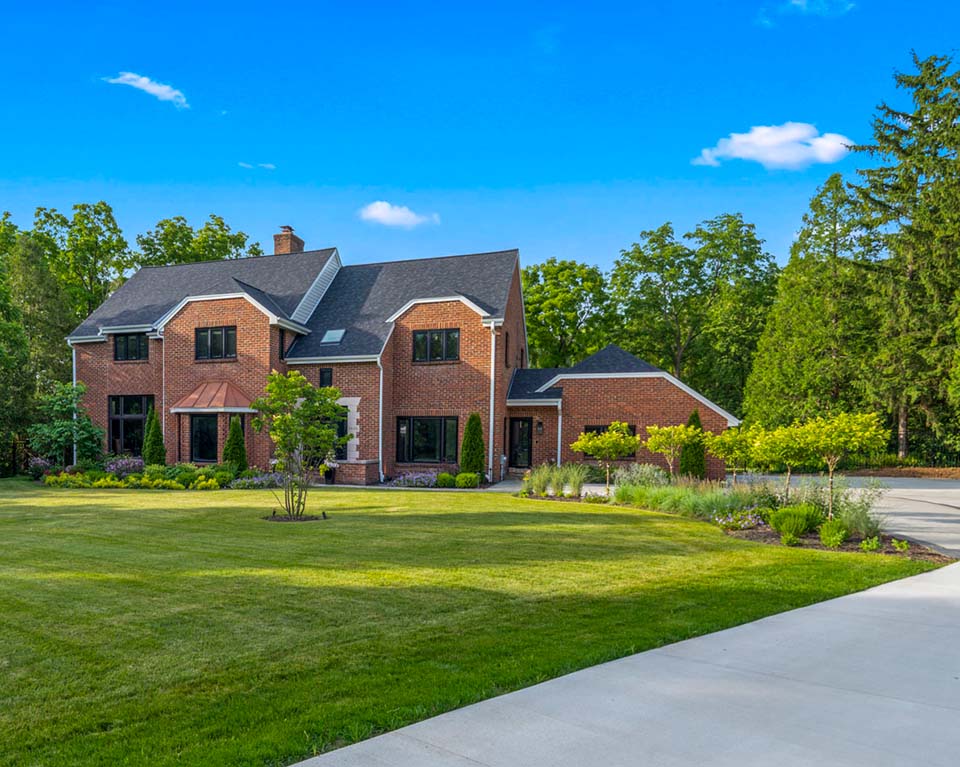Softscape services are the art of shaping your landscape with living elements — plants, trees, shrubs, groundcovers, and mulch — to create visual balance and long-term function. At Eco Harmony, we carefully select plant materials based on soil conditions, sun exposure, and your property’s unique layout to ensure long-term success. From layered plant beds to privacy screens and accent features, we blend texture, color, and form to complement your hardscaping and elevate your curb appeal. Every softscape project we provide is rooted in sustainable practices and tailored to reduce maintenance while enhancing the natural beauty of your space.
Trees and shrubs form the framework of a healthy, balanced landscape. Our team carefully selects species suited to Wisconsin’s climate and your property’s specific conditions. From shade trees to flowering shrubs, each plant is chosen and installed to enhance beauty, provide structure, and support long-term growth.
Perennials bring lasting color and texture to your landscape year after year. We design perennial gardens that thrive in Wisconsin’s changing seasons, combining native and ornamental varieties for continuous blooms. Each planting is arranged with care to complement your home’s architecture and create natural harmony throughout your yard.
Formal Landscapes are geometric and structured. They often follow artistic rules of symmetry and precision. They require more maintenance than other landscape styles. This structured style calls for boxwood hedges, fountains, sitting areas, and a more rigid formal plant layout. This style, which made its debut in the 18th century, contrasts with the typical organic nature of plants and adds visual stimulation as you follow the neatly trimmed rows of hedges and shrubs with classic perennials planted throughout. A formal garden typically matches up well with a colonial-style home. Formal landscapes include a simplistic color scheme of the perennials, perfectly hedged shrubs and evergreens, patios, walls, and stonework.
Contemporary Landscapes tend to be more natural and softer in comparison to modern landscapes. They enhance what is already in place by adding plants, changing shapes, etc. In contemporary landscape, curves are welcomed but should be tamed, wooden accents are often present, and bright flowers are emphasized though they should be contained by borders and strategically placed – less is more.
Are you blessed or cursed with the classic wooded lot? At the end of the day, it all depends on how you look at it. A Woodland Garden can be a very picturesque scene. You may feel that you are only limited to Hostas but that could not be farther from the truth. The true magic of a woodland forest starts off in Spring with what is called Spring Ephemerals. Purely native plants are like anything in life… all good things must come to an end. That’s not true though for other companion plants that offer a wide variety of other all-season interests found within a Woodland Garden. Not to mention… Autumn’s spectacular show of fall colors. Whether you are looking to accentuate the mature trees on your property or add seasonal interest through a wide variety of perennials thinking outside the box and looking to nature for inspiration is a great place to start when designing a Woodland Garden.
Prairie Gardens are natural-looking and filled with native grasses and wildflowers. They mimic the North American prairie, which is one of the world’s most stunning biotypes with great depth. They are both easy to care for as they are established and are lower maintenance. They add beautiful points of interest with bright vibrant colors and a soft sweeping backdrop for your home. Prairie Gardens call to mind the great pointillism of Seurat – when stepping back from the detail a beautiful portrait is waiting to be discovered. Another added benefit is the wildflower attraction of local pollinators which greater supports the local ecosystem.
From Basil for your favorite Italian dish to a robust mint plant for a hot summer afternoon Mint Julep… Herb Gardens are the perfect complement to your home. Whether for cooking, medicinal, or ornamental – herbs add a zest to your plate and visually to your landscape.
If you have been contemplating starting a Vegetable Gardening hobby, we can help make those first few steps easier for you, by creating raised beds, enclosed vegetable garden spaces, and soil perfectly balanced to produce an abundant harvest. Imagine having a farmers’ market right in your backyard – a true farm-to-table experience.
Rain Gardens highlighted more in-depth in Water Conservation is a perfect match for homeowners who are currently having issues with water maintenance. They often highlight native deep-rooted flowers, shrubs, and grasses as well as dry riverbeds and stonework to both add visual interest to your yard as well as collect and soak up rainwater as it runs off of your roof.
For the homeowner who is looking for the lowest maintenance landscape, there is the Rock Garden and is the perfect match. We create a “zero scaping” backdrop for your home that both look timeless and peaceful. Rock Gardens are made by picking contrasting and aesthetically pleasing rocks of different sizes and arranging them to compliment the space they are in. Some Rock Gardens are intimate and complex while others are created to mimic the natural Niagara Escarpment using outcropping as a nod to the bluffs and natural rock formations found in Wisconsin.

Customer Testimonials
Posted on



